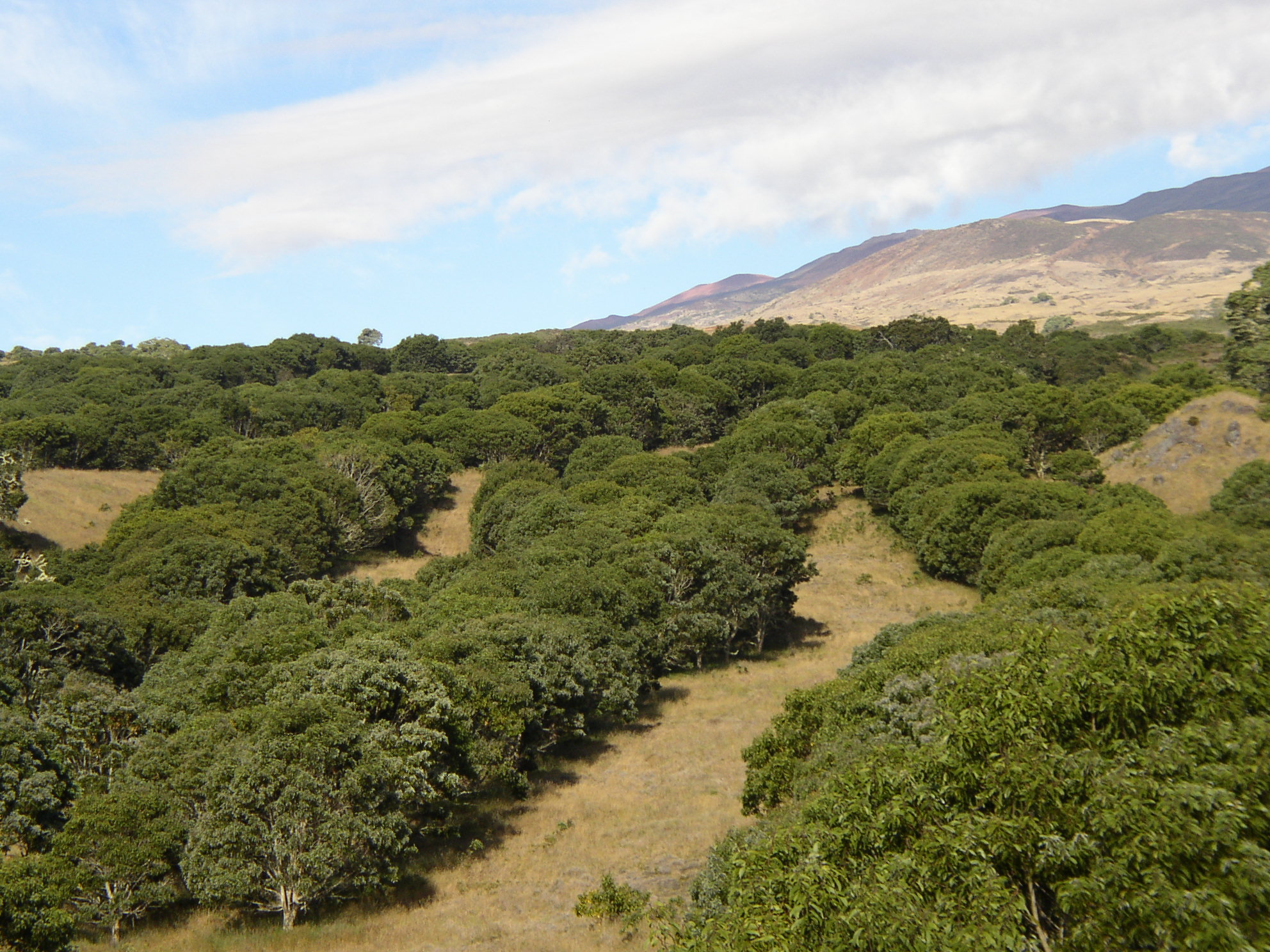Large-scale forest restoration: co-benefits for birds and landowners

Trees have the capacity to support biodiversity and establish connectivity across a landscape. In addition, trees can provide benefits (e.g., shade) for cattle that improve production efficiency for ranchers. Our research group has launching several linked projects exploring the role of restoring corridors and islands of trees on public and private land. A key goal of these projects is to explore the potential to restore primary habitat and dispersal corridors for birds and plants unable to cross large open gaps between protected forested land. Our work has focused largely on Koa (Acacia koa), a native tree that is ecologically, economically and culturally valuable: providing habitat for Hawaii’s many unique and endangered plants and animals, serving as a viable alternative to development for some private lands, and yielding luminous wood for crafts and canoes. In one study, we are partnering with landowners to create native tree islands on cattle ranches; islands are situated to test alternative ways of providing maximum potential future benefit to biodiversity while minimizing the opportunity cost of lost grazing area. In another study, we focus on the koa reforestation that has been underway for more than a decade at Hakalau Forest National Wildlife Refuge and several other properties on the island of Hawaii. The factors that influence the conservation value of these new forests have not been well documented. Our work in this system has been published in Diversity and Distributions, Conservation Letters, PLOS ONE and Pacific Science.
